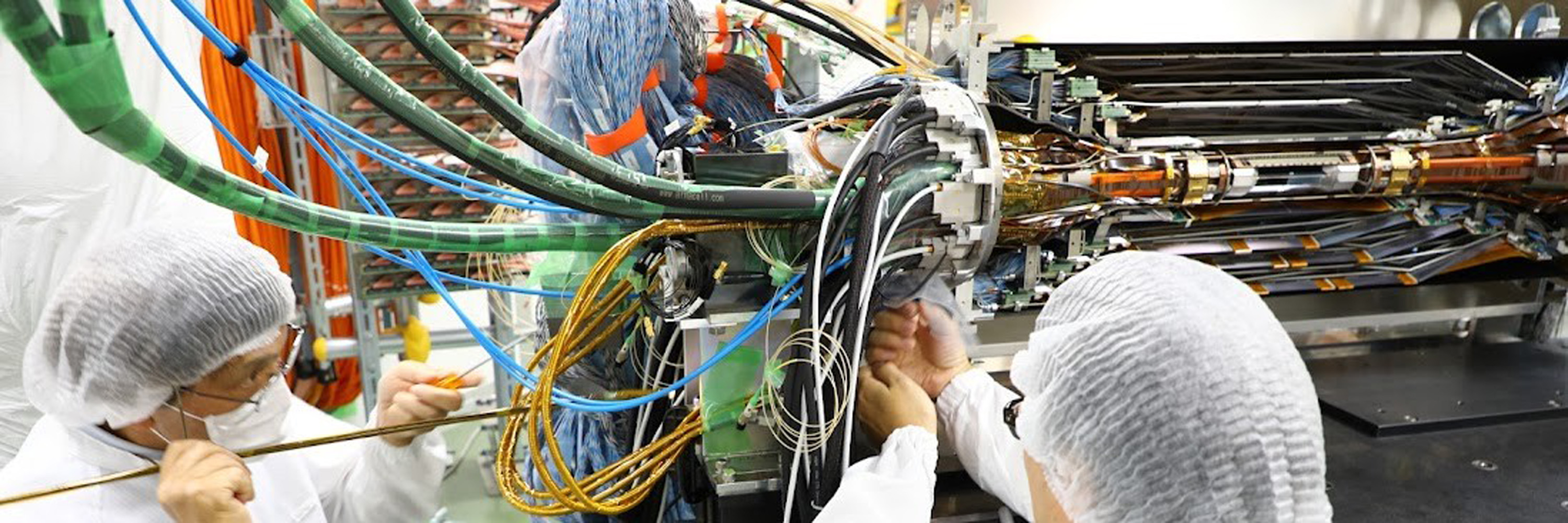
The Belle II experiment is an international project involving close collaboration between scientists from more than 100 institutes in more than 26 countries. In addition to Japan, the host country of the superKEKB accelerator and the Belle II experiment, a leading role in the experiment is also played by Germany: researchers from German institutes make up the second-largest group among the project's researchers after the Japanese institutes.
German research on the Belle II experiment can be roughly divided into three areas:
Physics analysis
German groups have a leading role in physics analyses to answer fundamental physics questions - they cover a very broad spectrum and hold leading position. They also play a major role in processing the data and determining and optimizing the performance of the detector and reconstruction algorithms for physics analyses.
Detector construction & development
German groups are responsible for the construction and development of the Pixel Vertex Detector (PXD): this includes the operation of the entire readout and data acquisition chain as well as the control and quality management of the PXD and the cooling of the PXD and the subsequent Silicon Strip Detector (SVD). They also work on the development and operation of the hardware trigger that picks in real time from the huge data streams the events of interest for the physical analyses.
![[Translate to English:] Beispielbild zur Physikanalyse; Photo des Computers © vecteezy](/fileadmin/user_upload/belle/direct_uploads/Analyse_gelb.png)
![[Translate to English:] Einbau des Vertex Detektors – © Belle II / KEK](/fileadmin/user_upload/belle/direct_uploads/Detektor.png)
![[Translate to English:] Beispielbild zur Softwareentwicklung; Photo des Computers © vecteezy / wichayada su](/fileadmin/user_upload/belle/direct_uploads/Github_gelb.png)
